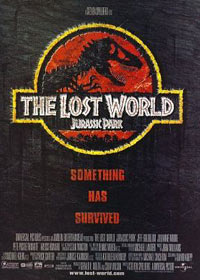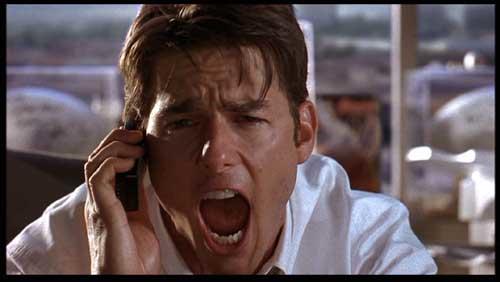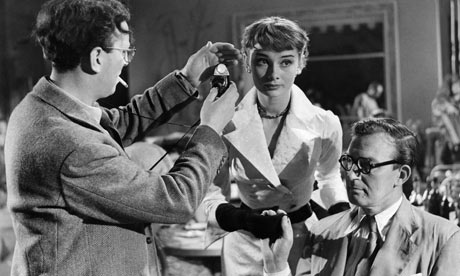DarthLowBudget
New member

This shot is from The Lost World, cinematography courtesy of Mr. Kaminski, and looks quite "normal". I'd say that Indy 4 is in fine hands.
Further "normal looking" shots by Kaminski:









commontone said:If Kaminski is using his "usual diffusion filters," what exactly does that mean?
Like someone mentioned above, many of Spielberg's recent movies seem to have muted, desaturated color. Is that due to these filters? It was a nice effect for films like Saving Private Ryan and Minority Report, but wouldn't at all be appropriate for Indy, IMO.
I don't know much about photography, but it seems a bit gimmicky. Kind of like if a mixing engineer detuned all the music he mixed by 4 cents, to give it his "personal touch" or something.


Nice examples!!Playmount said:It's the familiar "Filmed in Panavision" look.
VP said:So are they shooting Indy 4 in the traditional 2.35:1 anamorphic or the wider 2.40:1 anamorphic you mentioned earlier?
Playmount said:I think I remember them measuring around 2.20:1.

VP said:So they shoot at 2.40:1 and after cropping the black areas from the sides it becomes 2.35:1? Or what?
VP said:So when I take screenshots with PowerDVD and they aren't automatically stretched back from the anamorphic state should I stretch them to 2.30:1, 2:35:1 or 2.39:1 cropped?
Last week leading figures in British and American cinema turned out to take part in a Bafta tribute to the great cinematographer, Douglas Slocombe, 97 this coming February.

Douglas Slocombe, left, checks light levels with Audrey Hepburn on the set of The Lavender Hill Mob, 1951. Photograph: Everett Collection / Rex Features
At the age of 10, he met James Joyce in Paris when the novelist dropped around with a pre-publication copy of Ulysses for Dougie's bohemian parents, and his career ranges from covering the German invasion of Poland in 1939 as a combat cameraman (he is on his way home via Stockholm with his previous footage) to shooting all three Indiana Jones movies on exacting locations in the 1980s. From the early war years, Dougie was a leading photographer at Ealing, working in a variety of modes, from the macabre Dead of Night through the ultra-realist It Always Rains on Sunday to the iconic comedies Hue and Cry, Kind Hearts and Coronets and The Lavender Hill Mob.
After Ealing he shot the Cliff Richard musical The Young Ones, John Huston's Freud: the Secret Passion and Joseph Losey's The Servant, collaborating intimately with the directors in determining their individual styles, confirming his reputation for imagination, visual flair and dramatic composition, as well as becoming celebrated for his wit, modesty, generosity and calming influence on the set. A film of his appears in almost everyone's 10 best lists, whether it be for something as obscure as Losey's Boom! or the cult success The Italian Job.
Stories about him abounded. In his tribute, Harrison Ford claimed that Dougie never used a light meter – he just held up his hand and observed the shadow his thumb made on the palm. Vanessa Redgrave spoke of the wonderful way Dougie shot her father as a mad ventriloquist in Dead of Night, and the flattering way he lit her and Jane Fonda in Fred Zinnemann's Julia. Glenda Jackson recalled an overhead shot in which Dougie photographed her stark naked on the floor of a rocking Russian train in Ken Russell's The Music Lovers. When, after a brutal third take, he dropped on top of her from the luggage rack, he said, in his charming stammer: "I'm a m-married m-man."
At the end, Slocombe, owner of one of the great eyes in movie history but now nearly blind, thanked Bafta for honouring him and the NHS for making his appearance there possible.

..........deckard24 said:Douglas Slocombe was the cinematographer for RotLA, ToD, and LC, but has since been replaced by Janusz Kaminski who became Spielberg's go-to-guy starting with Schindler's List. I'm not a student of film or cinematography by any means, but I couldn't help but notice all of Kaminski's work with Spielberg has a grayed down bluish tinge to it. I'm assuming this is some kind of filter he uses, but the warm color saturation of the original 3 Indy movies is nowhere to be found in Spielberg's new movies. War of the Worlds, Munich, Saving Private Ryan, and Minority Report all had this look, which to me felt like the life had been drained out of the picture.
I know there's a few aspiring filmmakers here at The Raven, so what are your thoughts on Kaminski's style vs. Slocombe's? Will Indy 4 have a completely different look, or will Spielberg and Lucas guide Kaminski away from his usual style, and direct him as they see fit in order to achieve a visual continuity between the films?
deckard24 said:Douglas Slocombe was the cinematographer for RotLA, ToD, and LC, but has since been replaced by Janusz Kaminski who became Spielberg's go-to-guy starting with Schindler's List. I'm not a student of film or cinematography by any means, but I couldn't help but notice all of Kaminski's work with Spielberg has a grayed down bluish tinge to it. I'm assuming this is some kind of filter he uses, but the warm color saturation of the original 3 Indy movies is nowhere to be found in Spielberg's new movies. War of the Worlds, Munich, Saving Private Ryan, and Minority Report all had this look, which to me felt like the life had been drained out of the picture.
I know there's a few aspiring filmmakers here at The Raven, so what are your thoughts on Kaminski's style vs. Slocombe's? Will Indy 4 have a completely different look, or will Spielberg and Lucas guide Kaminski away from his usual style, and direct him as they see fit in order to achieve a visual continuity between the films?
Raiders112390 said:I don't know if I can say the same for KOTCS, though...Somehow the film looks VERY different from all the rest. It looks shiny, washed out, blurred like all the color has been drained from it leaving a dull mess. There's no warmth to the film's colors; no comic book sort of feel. It almost looks like a faded photograph in some ways, and I actually think the cinematography in a very subtle but major way actually helps in making KOTCS feel different from the other three--It makes it feel "alien" so to speak. The whole look of the film doesn't really "jive" with the original 3, and it makes certain things look out of place--Indy looks odd in his outfit in this movie, and it's really the lighting and whatnot that do it.
I'm not by any means a cinematograpy or film expert and maybe some here who know more on the topic can weigh in and speak about the technical aspects of this...But KOTCS LOOKS very different from the original 3 films and even from the YIJC, and it in turn gives it a very different "feel."--More like the Mummy films than the original trilogy. A little too modern looking; a little too bright; a little too well lit and washed out.